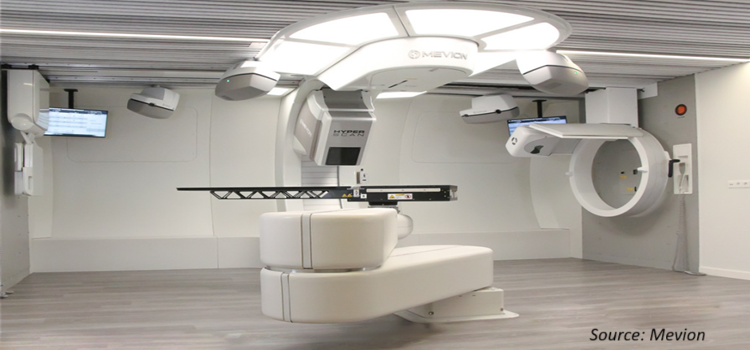
Digital Pathology Market by Product (Scanner, Software, Storage Systems, Communication System), Type (Human, Veterinary), End User (Educational, Clinical, Pharma & Biotech Companies), Application (Teleconsultation, Disease Diagnosis, Drug Discovery, Training & Education) - Global Opportunity Analysis and Industry Forecast, 2020 – 2030
Industry: Healthcare | Publish Date: 28-Nov-2024 | No of Pages: 285 | No. of Tables: 160 | No. of Figures: 130 | Format: PDF | Report Code : HC78
US Tariff Impact on Digital Pathology Market
Trump Tariffs Are Reshaping Global Business
Market Definition:
The Global Digital Pathology Market was valued at USD 4.96 billion in 2019 and is estimated to reach USD 17.28 billion by 2030, expanding at a CAGR of 11.9% during the forecast period from 2020 to 2030.
Digital pathology is also known as digital imaging, virtual slides, or virtual microscopy. It is a dynamic image-based environment that helps in the procurement, administration, and interpretation of pathological information by using a computer. It helps pathologist observe slides under a microscope and digitize the images using an image analysis software. Digital pathology provides live and high-resolution images that aid pathologist to diagnose better.
The adoption of digital pathology has increased in numerous applications such as diagnosis of diseases, research, and drug discovery. Also, the demand for digital pathology has increased due to the rising occurrence of chronic diseases around the world.
Market Dynamics and Trends
Rising prevalence of chronic diseases, increasing demand for the implementation of rapid diagnostic tools, and surging trend of digitization in the medical sector are driving the digital pathology market. Also, growing adoption of digital pathology for disease diagnosis, increasing government support, and ease of consultation have contributed to the growth of digital pathology market.
However, high cost, lack of reimbursements and unwillingness of older pathologists to switch to newer diagnostic tools are factors expected to hinder the digital pathology market growth. On the other hand, increasing awareness regarding the advantages of digital pathology, introduction of affordable scanners for private pathology practices, and increasing requirement for personalized medicine are creating new opportunities in the market.
Market Segmentations and Scope of the Study:
The global digital pathology market share has been segmented on the basis of product, type, application, end user and geography. On the basis of product, the market is categorized into scanners, software and storage and communication systems. On the basis of type, the market is divided into human and veterinary. On the basis of application, the market is segmented into teleconsultation, disease diagnosis, drug discovery and training & education. On the basis of end user, the market is segmented into educational, clinical and pharma & biotech companies. Based on geography the market is segmented into North America, Europe, Asia Pacific and RoW.
Geographical Analysis
The North America region is anticipated to hold the highest market share owing to the increasing adoption of digital pathology, increase in R&D investments, presence of big market players and high consumer awareness are among other factors expected to enhance market growth in this region.
However, Asia Pacific region is predicted to show rapid and consistent growth in market share within the forecast period. This is attributed to the factors such as developments in healthcare facilities, increasing adoption of advanced imaging modalities, and penetration of multi-national companies in the region to harness the untapped potential.
Competitive Landscape
Lucrative growth opportunities makes the digital pathology market extremely competitive. Some of the major players in the market are Danaher Corporation, 3Dhistech Limited, Glencoe software, Hamamatsu Photonics KK, Indica labs Inc., Koninklijke Phillips NV, Nikon Corporation, PerkinElmer Inc., Roche, Visiopharm A/S and more. Strategic alliances and acquisitions adopted by market players are among the major key strategies exercised to maintain market dominance.
For instance, In April 2019, HCG introduced US FDA approved digital pathology solution by Philips Intellisite Pathology Solutions across all its centers in India. This technology marks a major step towards the treatment of cancer through speed, precision, efficiency and ease of use with the potential to deliver significant clinical advantages to both the patients and physicians.
KEY BENEFITS:
-
The digital pathology market report provides the quantitative analysis of the current market and estimations through 2020-2030 that assists in identifying the prevailing market opportunities to capitalize on
-
The study comprises a deep dive analysis of the digital pathology market trend including the current and future trends for depicting the prevalent investment pockets in the market
-
The information related to key drivers, restraints and opportunities and their impact on the digital pathology market is provided in the report.
-
The market share of the players in the global digital pathology market along with their competitive analysis.
-
Value chain analysis in the market study provides a clear picture of the stakeholders’ roles.
Key Market Segments:
By Product
-
Scanner
-
Software
-
Storage and Communication System
By Type
-
Human
-
Veterinary
By Application
-
Teleconsultation
-
Disease Diagnosis
-
Drug Discovery
-
Training and Education
By End User
-
Educational
-
Clinical
-
Pharma and Biotech Companies
By Geography
-
North America
-
U.S.
-
Canada
-
-
Europe
-
Germany
-
France
-
UK
-
Italy
-
Spain
-
Rest of Europe
-
-
Asia-Pacific
-
Japan
-
China
-
Australia
-
India
-
South Korea
-
Rest of Asia-Pacific
-
-
RoW
-
Brazil
-
Saudi Arabia
-
South Africa
-
Remaining Countries
-
Key Players:
-
Danaher Corporation
-
3DHISTECH Ltd.
-
Glencoe Software, Inc.
-
Hamamatsu Photonics K.K.
-
Indica Labs Inc.
-
Koninklijke Philips N.V.
-
Nikon Corporation
-
PerkinElmer Inc
-
Roche
-
Visiopharm A/S
REPORT SCOPE AND SEGMENTATION:
|
Parameters |
Details |
|
Analysis Period |
2019–2030 |
|
Base Year Considered |
2020 |
|
Forecast Period |
2020–2030 |
|
Market Size Estimation |
Billion (USD) |
|
Market Segmentation |
By Product (Scanner, Software, Storage Systems, Communication System), Type (Human, Veterinary), End User (Educational, Clinical, Pharma & Biotech Companies), Application (Teleconsultation, Disease Diagnosis, Drug Discovery, Training & Education) |
|
Geographical Segmentation |
North America (U.S., Canada) Europe (UK, Germany, Italy, France, Spain, Rest of Europe), Asia-Pacific (China, Japan, India, Australia, South Korea, Rest of APAC), Rest of the World (Brazil, Saudi Arabia, South Africa, Remaining Countries) |
|
Companies Profiled |
Danaher Corporation, 3Dhistech Limited, Glencoe software, Hamamatsu Photonics KK, Indica labs Inc., Koninklijke Phillips NV, Nikon Corporation, PerkinElmer Inc., Roche, Visiopharm A/S |

















 Speak to Our Analyst
Speak to Our Analyst





















